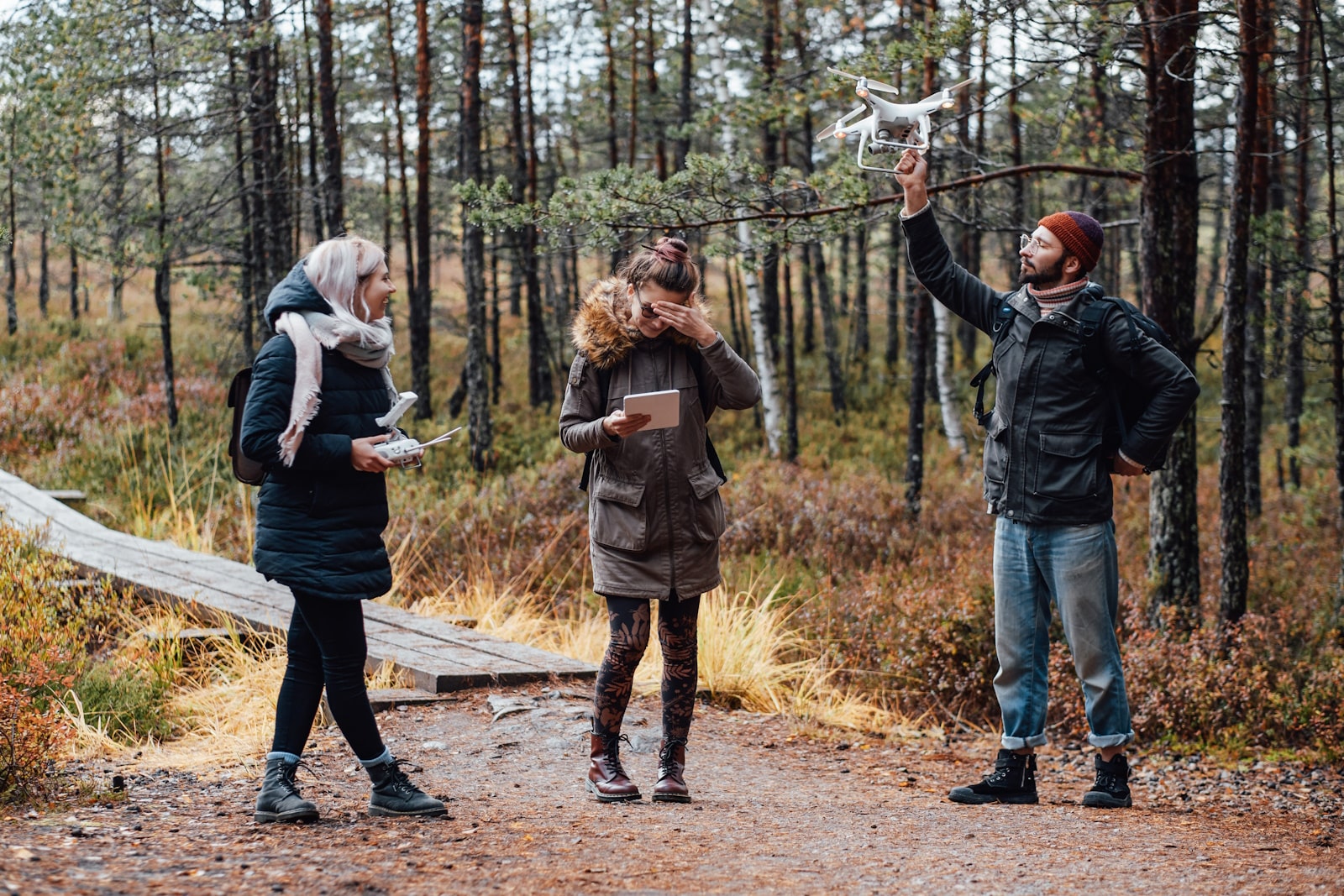
Drone Cinematography Regulations and Innovations
Drone cinematography has redefined the boundaries of visual storytelling, opening up new dimensions for creativity, scale, and precision. For video production firms in South Africa, drones are more than just flying cameras—they are vital tools in producing compelling, dynamic content across various industries. However, with great potential comes the responsibility to operate within a regulated framework and adapt to rapid technological advancements that are shaping the future of aerial filming.
Understanding Drone Laws by Region
South African drone operations fall under the jurisdiction of the South African Civil Aviation Authority (SACAA), which governs the commercial use of remotely piloted aircraft systems (RPAS). To operate legally, video production firms must obtain a Remote Operator Certificate (ROC), register their drones, and employ pilots with Remote Pilot Licences (RPL). Additionally, operators must comply with strict airspace restrictions and adhere to safety protocols, especially when filming near controlled or sensitive areas.
Globally, drone laws vary significantly. The U.S. and the European Union have established unified frameworks that regulate licensing, airspace use, and identification requirements. For South African firms collaborating internationally or working on cross-border projects, understanding these international standards can provide a strategic advantage. While South Africa leads the African continent in drone legislation, ongoing changes necessitate that firms stay updated to maintain compliance and avoid penalties.
FAA Part 107 Certification: A Benchmark
The U.S. Federal Aviation Administration (FAA) introduced the Part 107 certification to formalise the use of drones in commercial activities, including cinematography. While this is a U.S. standard, its global influence makes it a benchmark that many countries and professionals reference when establishing best practices. For South African video production firms working with international clients or on U.S.-based projects, familiarity with Part 107 can enhance professionalism and ensure compliance with global expectations.
The certification process includes passing an aeronautical knowledge test, registering drones, and adhering to operational limitations such as altitude caps, visual line-of-sight, and daylight-only operation unless special waivers are obtained. By aligning internal protocols with international standards like Part 107, video production firms in South Africa can position themselves competitively in global markets.
No-Fly Zones and Geo-Fencing
In South Africa, no-fly zones encompass areas surrounding airports, military bases, national key points, and certain government facilities. The SACAA requires that any drone operations in controlled airspace receive explicit authorisation from Air Traffic and Navigation Services (ATNS). Video production firms must incorporate this compliance into their pre-production planning to avoid legal complications and ensure safe filming environments.
Many commercial drones come with built-in geo-fencing software that prevents them from entering restricted zones. This technology is crucial in enhancing operational safety and simplifying compliance for production crews. However, geo-fencing should not be solely relied upon; firms must conduct thorough risk assessments and consult official airspace charts for each location shoot to ensure full regulatory adherence.
Drone Insurance and Liability
Insurance is a fundamental aspect of professional drone operation. In South Africa, commercial drone operators are legally required to carry liability insurance, especially when filming in populated or urban areas. This insurance typically covers damage to equipment, injury to third parties, and potential legal fees resulting from incidents during operations. For video production firms, having comprehensive insurance coverage is essential for safeguarding both crew and clients.
Additionally, many clients and government bodies require proof of insurance before granting filming permissions, making it a critical component of a firm’s operational toolkit. Investing in robust insurance not only mitigates financial risk but also demonstrates a commitment to responsible business practices—something increasingly valued in the competitive video production industry.
Permits for Urban and Event Filming
Filming in urban spaces or during public events poses a unique set of challenges due to the proximity of people, buildings, and critical infrastructure. South African video production firms must secure filming permits from local municipalities and the SACAA before conducting such operations. These permits often require detailed flight plans, risk assessments, and proof of licensed personnel.
Flying over crowds is generally prohibited unless special waivers are obtained. This means that firms must often collaborate closely with city councils, law enforcement, and aviation authorities to gain the necessary approvals. By navigating these procedures effectively, production teams can expand their creative capabilities while maintaining full compliance with national regulations.
Remote ID and Air Traffic Integration
Remote ID technology is being adopted internationally as a means of enhancing drone accountability and integrating UAS into broader air traffic systems. While South Africa has not yet made Remote ID mandatory, discussions are underway regarding its implementation. For video production firms, understanding Remote ID is essential as it will likely become a future requirement.
Remote ID functions like a digital licence plate, broadcasting information such as the drone’s location and the operator’s identity. This capability enables law enforcement and aviation authorities to monitor drone activity in real time, thereby improving safety and airspace coordination. Preparing for these developments will place South African firms ahead of the curve as regulations evolve.
Innovations in Camera Stabilisation
Camera stabilisation has seen dramatic improvements in recent years. Today’s drones feature 3-axis mechanical gimbals combined with digital image stabilisation software that delivers ultra-smooth footage, even in challenging flight conditions. These technologies allow video production firms to capture cinematic-quality content directly in the field, reducing post-production workloads.
Stabilisation systems also enhance shot consistency and enable advanced filming techniques such as tracking shots and aerial pans. The integration of these systems into drones has democratised high-end cinematography, allowing even small teams to produce professional-grade results that meet the high standards of clients across sectors.
Obstacle Avoidance and AI Navigation
Modern drones utilise artificial intelligence and a suite of sensors—including LiDAR, infrared, and stereo vision—to detect and avoid obstacles in real time. This capability is invaluable when filming in complex environments such as dense forests, industrial areas, or dynamic event spaces. For video production firms, AI-powered navigation reduces the risk of crashes and streamlines the creative process.
Incorporating obstacle avoidance technology allows for more daring and intricate shots without compromising safety. These intelligent systems also make it easier to train new drone pilots, enabling firms to scale operations while maintaining quality control and safety standards.
FPV Drone Filming: A Cinematic Revolution
First-person view (FPV) drone filming has emerged as a game-changer in visual storytelling. These agile drones provide immersive, high-speed footage that traditional aerial platforms cannot match. For South African video production firms, FPV filming offers a unique visual signature that can differentiate their services in a crowded market.
FPV drones are particularly effective in action sequences, sports, and experiential marketing videos. Pilots use headsets to control the drone in real time, capturing fluid and dynamic shots that bring viewers into the heart of the action. Integrating FPV into a firm’s service offering can significantly enhance the scope and creativity of aerial cinematography.
High-Resolution Aerial Imaging
The rise of ultra-high-definition drone cameras—ranging from 4K to 12K—has dramatically elevated the quality of aerial footage. These high-resolution systems enable video production firms to capture detailed, colour-rich imagery suitable for broadcast, cinema, and large-format displays. This technology aligns perfectly with South Africa’s stunning natural and urban landscapes, which demand high visual fidelity.
Incorporating these advanced cameras allows for seamless integration with other professional-grade equipment, ensuring consistent quality across entire productions. For clients with demanding visual standards, such as tourism boards, real estate developers, or advertising agencies, high-resolution imaging is no longer optional—it’s expected.
Night Flight and Low-Light Cinematography
Thanks to advancements in sensor technology, filming in low-light conditions has become increasingly viable. Modern drones now feature larger apertures, enhanced ISO performance, and dedicated night-flight modes that deliver clear, noise-free footage in challenging lighting environments. This opens up new creative possibilities for video production firms.
However, operating at night in South Africa still requires approval from SACAA, including additional safety precautions and possibly observer personnel. Firms that can navigate these requirements and execute high-quality night shoots will enjoy a competitive edge in sectors like event coverage, hospitality, and tourism.
Eco-Friendly Drone Technologies
Sustainability is gaining momentum in drone design. Manufacturers are now focusing on quieter motors, improved battery efficiency, and recyclable components to minimise environmental impact. These innovations are particularly relevant for video production firms filming in sensitive environments such as wildlife reserves, heritage sites, or eco-tourism destinations.
Using eco-friendly drones not only supports conservation efforts but also aligns firms with the values of environmentally conscious clients. In an industry increasingly shaped by ethical practices, adopting greener technologies can be a compelling differentiator and a strategic advantage.
Drone cinematography is shaping the future of visual content across industries. For South African video production firms, the key to thriving lies in mastering both compliance and innovation. By staying current with regulations, investing in advanced technologies, and adopting sustainable practices, firms can offer superior value to clients while operating safely and responsibly.
If your business is exploring drone cinematography, contact us at Sound Idea Digital. We are experienced, certified, and committed to helping video production firms leverage aerial storytelling to its full potential.



